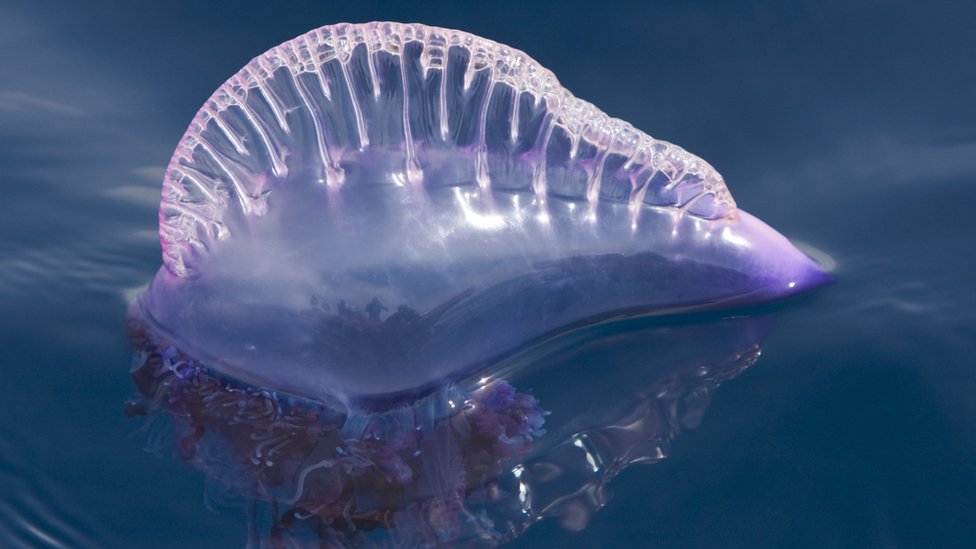INSUBCONTINENT EXCLUSIVE:
Image copyrightGetty ImagesImage caption
Bluebottle jellyfish stings can be painful
Vast numbers of
bluebottle jellyfish have swarmed beaches in Queensland, Australia, stinging thousands of people and forcing the closure of swim spots.Surf
Life Saving Queensland said over 2,600 people received treatment at the weekend
Bluebottle stings are painful but typically not life-threatening.Unusually strong winds pushed the jellyfish colonies close to shore.About
13,000 stings were recorded in the past week - three times more than in the corresponding period last year.Most incidents took place in
Queensland's heavily populated Gold Coast and Sunshine Coast regions.Bluebottle jellyfish colonies appear like blue-tinged sacs which
measure up to 15cm (6 inches) long
People can be stung in the water or on sand
The stings are typically mild and can be treated with ice or hot water, however some people had required treatment by paramedics at the
weekend, Surf Life Saving Queensland (SLSQ) said
The number of those cases was not recorded.The jellyfish activity forced the closure of busy beaches.Bluebottle jellyfish, also known as
Portuguese man o'war, are often seen on Australia's east coast during summer.But a SLSQ spokesman described the latest influx as an
"epidemic", while some local media outlets labelled it an "invasion".Dr Lisa-Ann Gershwin, a jellyfish expert from Australian Marine Stinger
Advisory Services, agreed it was unusual to see gatherings in such numbers.She said "a really weird run" of strong winds and heat spells had
brought bluebottle jellyfish and other species closer to shore.But she added that given those unusual weather conditions, the number of
jellyfish should be considered "not abnormal".The species is most commonly found in deeper seas, but can be moved easily because it has a
"sail" crest on its back."A bluebottle has that sail that sticks up - so the wind grabs the sail and drives them ashore," Dr Gershwin told
the TheIndianSubcontinent.

